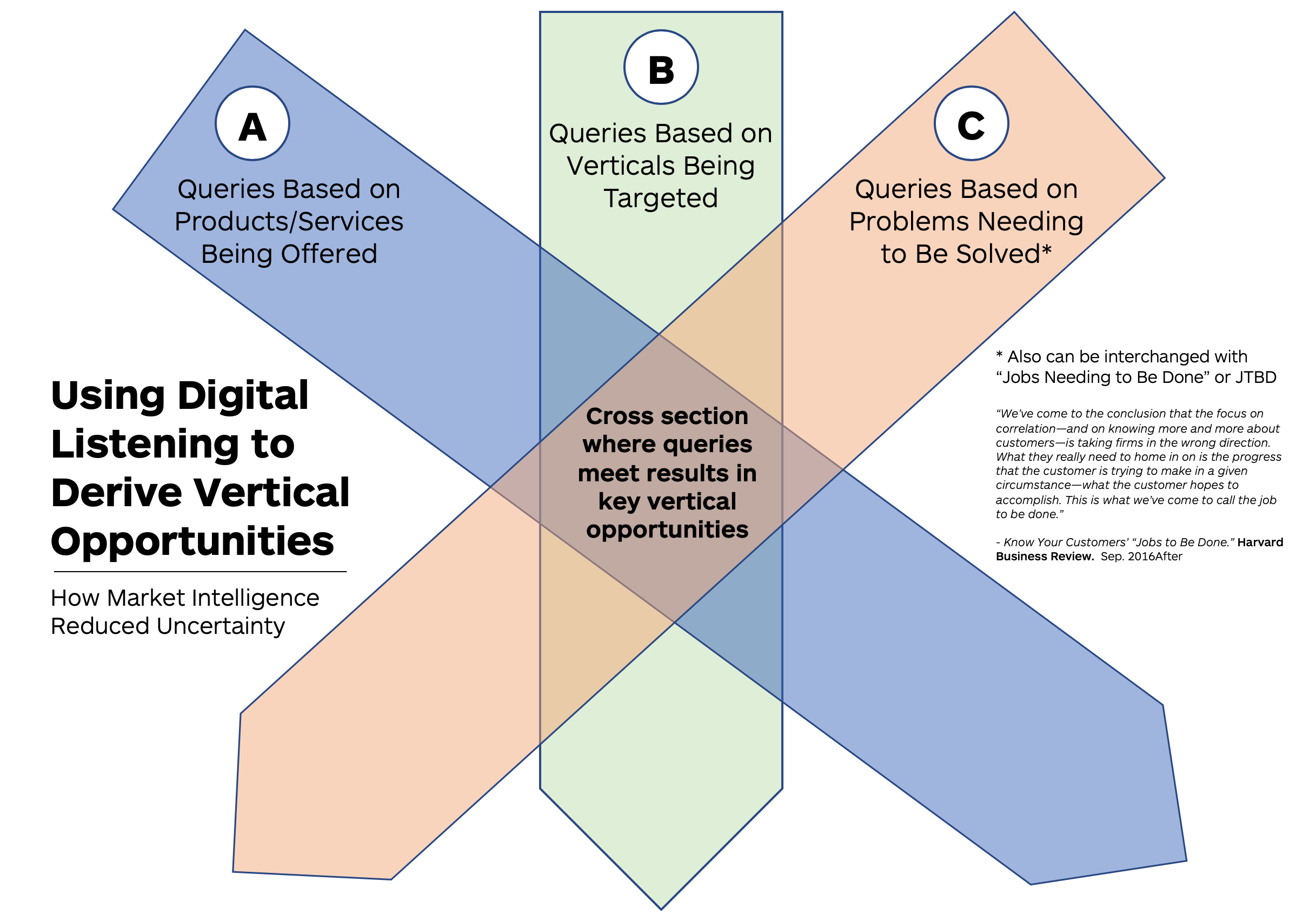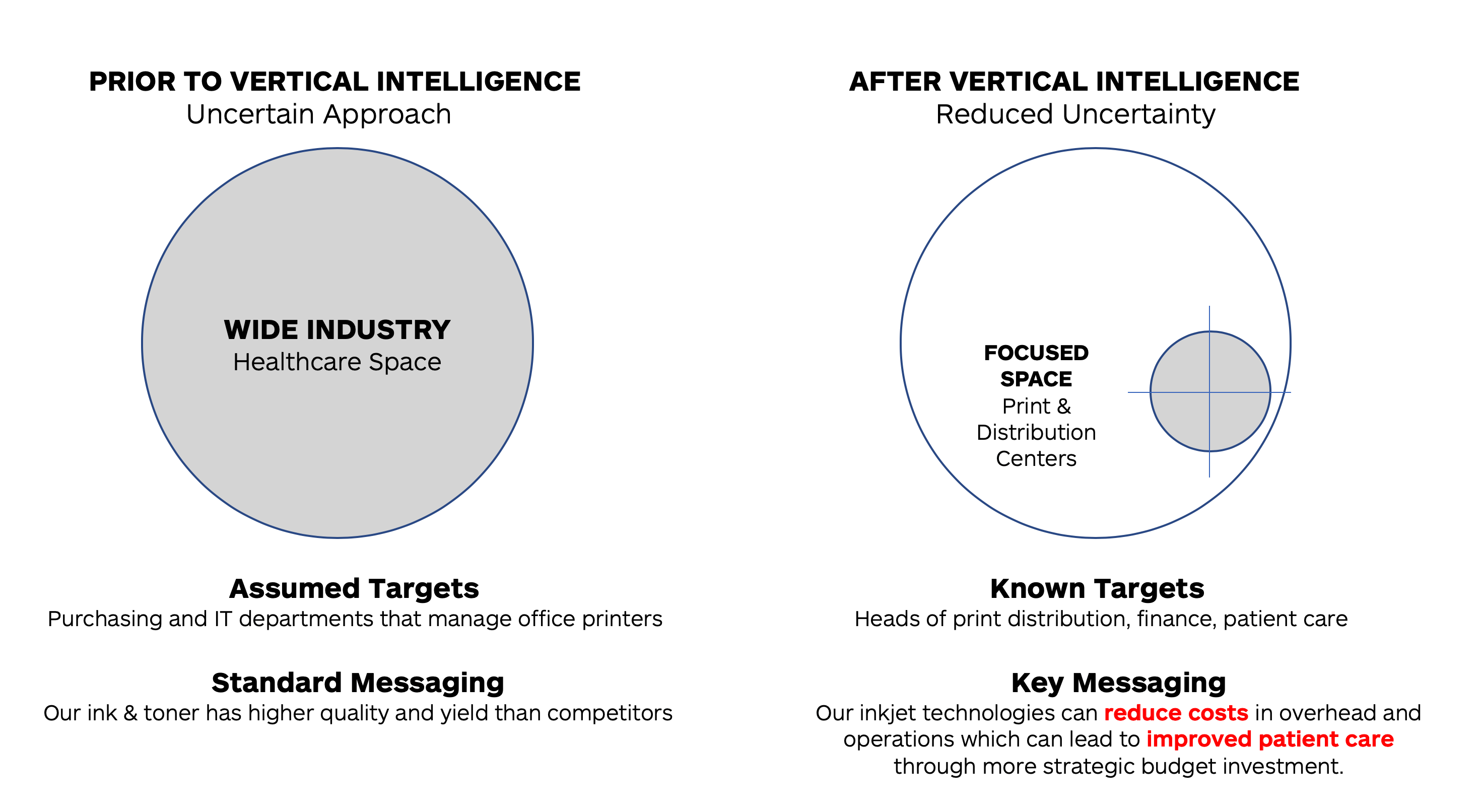Using Digital “Intelligence” To Source Vertical Opportunities
NOTE: This is part of a blog series entitled, “The Six Chapters of the Social Insights Story.” You can read the intro here.
All of us know what it’s like to drive at night in a dense fog. Given the obscurity and lack of clarity in front of us, we use various bits of information to help guide our way. We reduce our headlights from high beams to low so that we can focus on the road right in front of us. You may also keep an eye on the painted shoulder line to detect where the road might bend, or focus on another car’s tail lights to watch for sudden turns or changes in the road ahead. All of these “tricks” are essentially ways we use intelligence to reduce our uncertainty when our destination ahead is shrouded or unclear.
This is exactly why we intentionally use the word “intelligence” as opposed to “insights” when it comes to digital monitoring. Namely because we strive to achieve what analysts in other fields phrase as “the reduction of uncertainty.” In an article entitled “Assessing Uncertainty in Intelligence,” which focuses on the importance of information gathering and national security, Jeff Friedman and Richard Zechauser make the case that while you can’t “eliminate” uncertainty, it is the goal of any analyst, as they gain information, to “reduce” the amount of uncertainty around a specific topic.
This is absolutely the case when it comes to monitoring digital content for the purpose of helping companies uncover new revenue opportunities inside key verticals. The goal, which is highly achievable, is to collect and analyze information in a way where you are simultaneously querying for three things: (A) intel on a specific product or service, (B) intel for a specific vertical and finally, at the same time (C) crossing this with data that nets problems, goals, or issues people might be having. (Alternately, this set of queries can be based on a “Jobs to Be Done” framework.) The end result is that a client learns about opportunities where their services might be uniquely marketed into a more focused area.
However, our goal, true to this article is not simply to identify a new marketing opportunity but rather to help reduce the uncertainty (or conversely increase their confidence) in their campaign and content efforts. When we talk about using digital listening to isolate vertical opportunities, our goal is not simply bland, generic information but rather to collect intel that allows the client to actually do any or all of the following:
- More strategically target specific roles and job titles
- Craft customized content with language specific to the problem
- Uniquely tie their solution to an actual revenue generator
- Guide and direct channel partners towards regional opportunities
This is what we mean by reducing uncertainty. When you have higher confidence that you have sufficiently zeroed in on a target with the right messaging, you can invest budget in marketing efforts knowing that a good deal of the “fog of war” has been cleared.
CASE STUDY
Recently we were conducting vertical-based listening for a client in the tech services that is a leading provider of ink and toner supplies for the commercial space at the enterprise level. True to the analyzation framework I noted above, our team developed a strong set of queries that crossed all of the following simultaneously:
- PRODUCT/SERVICE: Ink & Toner for the commercial space
- TARGET INDUSTRIES: Healthcare, Legal, Government, Manufacturing
- PROBLEMS: Budget, Customer Service, Acquisition
Almost immediately the team uncovered information in the healthcare space. A leading provider of healthcare had recently sent a team to a conference on emerging technologies where they learned of new advancements in the inkjet space. A decision was made to invest in new commercial inkjet technologies for their mail and distribution centers. The discovery was made that the efficiencies within the new printing technologies around lower inkjet consumption would result in a consolidation of three distribution centers into only one. This would mean a recoup of budget dollars locked in operational and overhead costs that could then be directed back into improving overall patient care.
This would result in our being able to reduce uncertainty for our client in their marketing and sales efforts as illustrated below.
Conclusion
Digital listening is not limited to identifying vertical opportunities, which is why this post is simply a chapter in a larger story. But identifying net new revenue opportunities inside key industries and then using the intelligence gathered to reduce uncertainty in marketing strategies is a key strength. By defining focused targets and crafting messaging in a way that connects your offerings to a concrete revenue issue, you are using digital intelligence that will undoubtedly yield new revenues for yourself as well.







